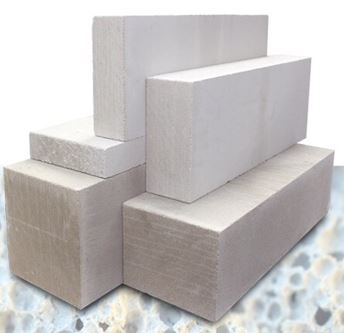Fly ash bricks are made from burned coal ash. It is an ecological material with very low impact on the environment. If we burn coal to make fly ash bricks, that will be a big environmental problem, but we don't do that. We use the ash from burning coal to generate electricity.
Fly ash is a by-product of thermal energy generation.
When coal is burned, fly ash is produced. In the past, fly ash was mainly used as a pozzolanic additive to concrete.
Due to its greater surface area compared to cement, fly ash is used as a cement substitute.
Additionally, fly ash is used to reduce the heat of hydration in higher quality concrete.
In the modern construction industry, where sustainability is key, low carbon products are encouraged.
Since fly ash is a waste/by-product, its energy content is very low compared to bricks.
Therefore, the use of fly ash bricks will become more common in the construction industry. Furthermore, the low construction cost and other advantages will bring even more benefits to the construction industry.
Fly ash has comparatively higher strength compared to clay bricks and offers more advantages than other materials.
Furthermore, there are many sizes available that can be used for construction and using the larger sizes can reduce the amount of cement mortar.
The following figure shows the composition that can be used to make fly ash brick. It should be noted that the composition of materials used by different manufacturers varies depending on the design of the mixture.


Additionally, fly ash is a cementitious material commonly used in the production of concrete.
The advantages and disadvantages of fly ash brick can be categorized as follows.
Advantages of fly ash bricks
- Fly ash is a waste and therefore sustainable. Environmentally friendly.
- Reduce the weight of the structure due to the light weight of the bricks
- Reduce waste with greater resilience
- Due to the uniform size, it reduces the volume of mortar in joints and plasters. It can be around 20% to 40%
- Good replacement product when there is a labor shortage as fewer workers are needed for construction
- A good substitute for material shortages
- Save energy
- Greater fireproof insulation
- Due to low water absorption, water penetrates walls less


Disadvantages of fly ash bricks
- Due to the smooth surface, the adhesion strength is low. This can be remedied by using mortar mixes in a 1:4 ratio.
- It is good for hot environments because it does not absorb heat, but not good for cold environments
When comparing clay bricks and fly ash, it is clear that fly ash bricks have more advantages than clay bricks. The table below provides a summary of the comparison.
| Fly Ash Bricks | brick |
| Low embodied energy | Superior embodied energy |
| Low carbon footprint | High carbon footprint |
| Low construction costs | Higher construction costs |
| Greater compressive strength | Low compressive strength |
| Uniform shape | Irregular shape |
| Dense composition | Easily stick |
| Light | Greater weight |
| Compressive strength 8-10 N/mm 2 | Compressive strength 3-5 N/mm 2 |
| Less porous | Greater porosity |
| Water absorption 2-6% | Water absorption 20-25% |
| Thermal conductivity 0.9-1.05 W/m 2 0 C | Thermal conductivity 1.25-1.35 W/m 2 0 C |
From the above comparison, it is also clear that using fly ash brings more benefits than using mud bricks.
And most importantly, it is sustainable and reduces your carbon footprint. The world now expects the construction industry to provide us with a better future.

